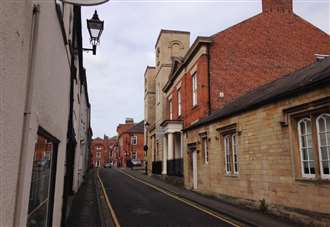In the Stamford Mercury in 1826, Thomas Burgess, born in 1793, baker of Finkin Street, advertised for an apprentice baker. He added that applicants must pay for the postage on their letters! In 1841 Thomas and his wife lived there with three servants. In his will of 1851, he left all his goods, furniture, wearing apparel and estate to his wife Mary Ann.
In the Story of Bread published in 1956, bread prices from 1600 to 1956 are listed for a 4lb loaf of bread bought in London. In 1600 the price was 4.02d and stayed fairly consistent, with the exception of 1647-1651 immediately following the Civil War 10.

5d and then settled down to 3.6d-5.2d.
The next price rise was in 1795 when prices increased to 11.28d and then up again to 14.27d in 1801, which was probably a combined effects of the French Wars and poor wheat harvests.
By the late 1800s bread cost about 7d for a loaf, dropping to 5.4d in 1907. Between 1915 and 1919, during and after WWI, prices increased to between 9d and 10.
7d and didn’t reduce to 7d until 1933. Bread remained between 7d and 8d during the Second World War when loaves were reduced to 31⁄2lbs in weight but prices were still calculated on 4lbs. By the 1950s prices began to climb slowly and by 1955 had reached 17.
1d per loaf. Between 1940 and 1956 there was a national bread subsidy, when prices were controlled, and when this was removed in 1956, prices increased to 23.13d per loaf, which were reduced to 2lbs in weight.
.
Top

Then and Now: Finkin Street

In 1826, Thomas Burgess, born in 1793, baker of Finkin Street, advertised for an apprentice baker.











